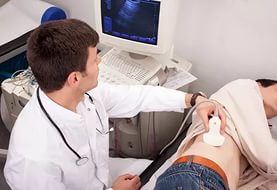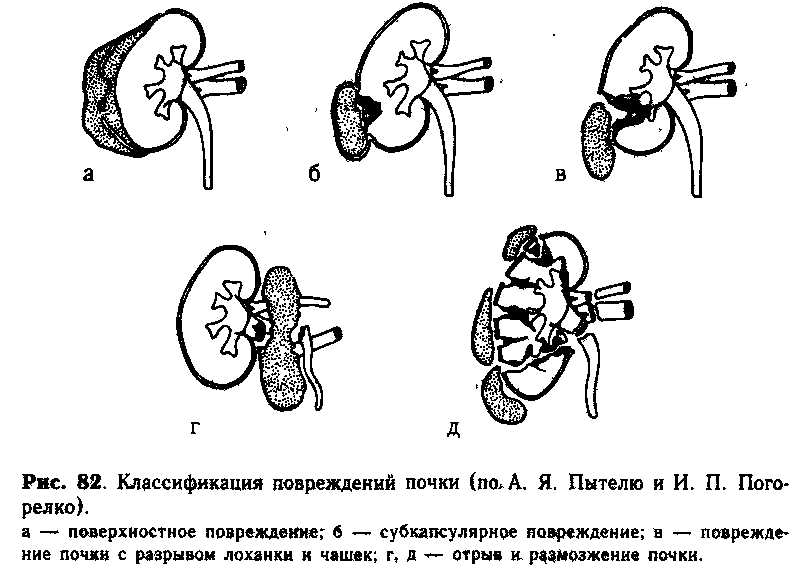How to treat a kidney injury
Get rid of dangerous papillomas FOREVER
A simple and proven way to get rid of papillomas and warts without dangerous consequences. Find out how >>
What to do with a kidney injury
Kidney contusion is an injury that is accompanied by severe hemorrhages. The causes of such damage can be various injuries: blows to the lower back, falls from a great height, domestic injuries, accidents, or prolonged squeezing of the organ.

Types of kidney injury
Bruises of this internal organ can have varying degrees of severity. According to the location, they are divided into several categories:
- top part;
- lower;
- vascular pedicle;
- organ body.
Depending on the direction of the blow and its strength, the injury can be complex or mild. Much depends on the physiological characteristics of a person: the location of the organs, the fullness of the intestines at the time of injury and the fat layer on the body of the victim.
In terms of severity, a bruise in the kidney area can be classified according to the volume and severity of the damage. The first and second degrees are mild, and the remaining three are severe:
- The first degree involves contusion or subcapsular hematoma without tissue rupture.
- The second degree is accompanied by perirenal hematoma, damage to the superficial cortical layer without hematuria.
- The third degree is tissue damage to a depth of more than a centimeter without hematuria.
- The fourth degree involves deep damage to the organ to the pyelocaliceal system or thrombosis of the renal artery.
- The fifth degree is a very serious injury that may be accompanied by thrombosis of the main branch of the artery, multiple tissue damage, and rupture of the main renal artery or vein.
Kidney injury symptoms
As a rule, signs of a kidney injury make themselves felt immediately after damage. They may be as follows:
- Sharp stitching pains.
- Deterioration of well-being in general.
- Hematuria (blood in the urine). This condition may not depend on the degree of damage to the kidney. With serious injuries such as tearing off the ureter or pelvis, hematuria may not occur. It mostly appears immediately after the incident, but can act as a secondary symptom, manifesting itself after a few days or even weeks.
- The appearance of a tumor in the lumbar region or under the ribs. This is due to the fact that a bruise in the kidney area is sometimes accompanied by a hematoma.
- Peritonitis is a very dangerous complication of trauma (blood and urine enter the abdominal cavity).
- With a kidney injury, symptoms may be more common: nausea (up to vomiting), pale skin, pain in the lower abdomen, high fever, etc.
How to diagnose kidney damage?
Taking into account hemodynamic parameters, doctors determine the method of treating a kidney injury. If the indicators are stable, the specialists prescribe the most thorough examination to the victim.
Diagnosis in a clinic involves the presence / absence of blood in it. Also, doctors can refer the patient for additional research to determine.

As for instrumental diagnostic techniques, with a bruise in the kidney area, doctors can prescribe:
- x-ray;
- ultrasound examination;
- angiography;
- tomography.
The diagnosis is established on the basis of an x-ray. A survey radiograph allows you to determine the location of the injury, the presence of bone fractures, identify retroperitoneal hematoma and other injuries.
One of the safest and most effective methods of examination is the use of ultrasound machines. In this case, it is possible to identify changes in the structure of the organ, the presence and specific location of hematomas.
With regard to surgery, this most urgent method is resorted to in the absence of accurate results after the above types of research and with a sharp deterioration in the condition of the victim.
Complications after kidney injury
What to do with a bruised kidney, everyone should know at least in general terms. Damage to the kidneys is not only isolated, but may be accompanied by injuries to other organs and systems of the body.

A complete professional examination excludes additional damage in the form of injuries to the intestines and lungs with the corresponding consequences. In this case, the victim's condition becomes very severe and sometimes pain shock occurs. Damage to the organs of the abdominal region near the kidneys can lead to a symptom of an acute abdomen.
Doctors must determine if the pelvis, vascular pedicle, or other parts of the organ have come off. At first, hematuria sometimes does not manifest itself, but occurs a few days after the injury.
Another dangerous complication of severe kidney injury is its rupture. This happens with the strongest direct blow to the zone of its location. The kidney can be clamped by the ribs and transverse parts of the vertebrae.
Sometimes peritonitis becomes a consequence of a bruised kidney. Severe bleeding after an injury can cause blood deficiency and anemia. Without timely treatment to a doctor, a fatal outcome occurs.
How to treat a kidney injury
Treatment of a kidney injury with a mild injury does not require the use of special drugs, and the bruised organ should simply be provided with maximum rest. With regard to severe injuries, the treatment of kidney contusion at home becomes impossible. The victim must be hospitalized to prevent complications.
If a kidney injury is accompanied by damage to the lungs or intestines, the condition can be very severe, requiring surgery. In the event that signs of urination disappear during a bruise, doctors put a catheter.
With increased pain and shock conditions, doctors prescribe antibiotics for kidney injury, and also administer pain relief with the help of analgesics. The latter are administered intramuscularly or intravenously, which allows you to achieve the fastest possible effect.
Immediately after receiving a bruised kidney at home, you can apply cold to reduce pain and relieve swelling. To speed up the process of regeneration of a damaged internal organ, you need to drink less water, as an extra load can harm.
With mild bruises, after a few days, you can start doing warm-up procedures for the treatment of kidneys at home. They will help to quickly remove swelling and speed up recovery.
In the treatment of any injury to the kidney during a fall or a strong blow, all physical activity should be canceled. A few days after the injury, you need to protect yourself from any overvoltage. Additional procedures may be required in the form of electrophoresis, physiotherapy, ultra-high frequency therapy, magnetotherapy, etc. All of these procedures are prescribed by doctors after conducting the examinations necessary for making a diagnosis.




